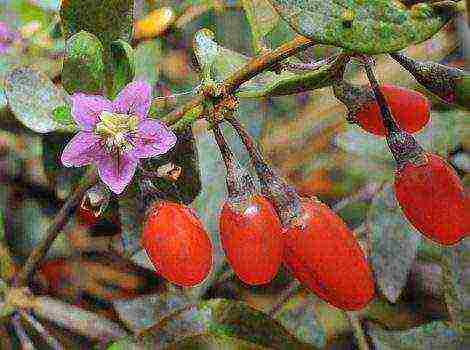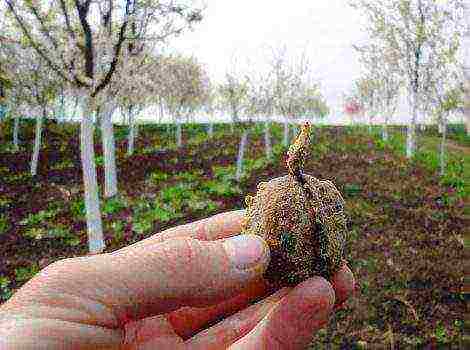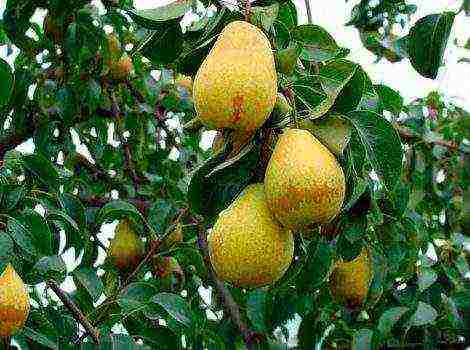Content
Chestnut diseases and how to treat them
Chestnut is a very beautiful and powerful tree, which also bears beneficial fruits. Various diseases are considered one of the main problems of its cultivation. and pests. Let's see why in the summer the chestnut leaves are covered with rust and how to deal with it.
Combating chestnut diseases
One of the most important rules for caring for a tree is its protection from diseases and pests. In no case should you skip preventive proceduresbecause it is much easier to prevent the disease than to cure it.
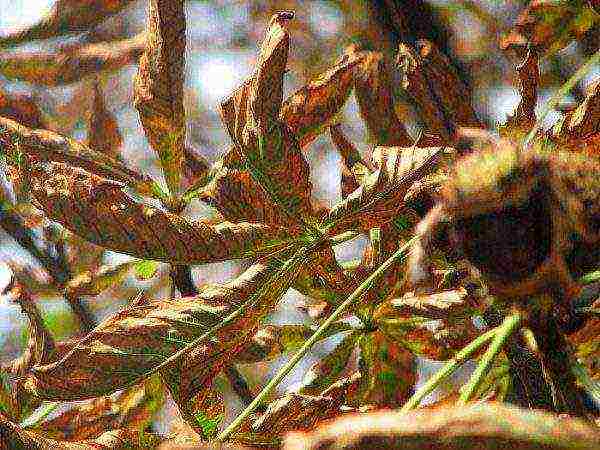
But if the tree does get sick, treatment should be started immediately to avoid complications. Besides, some diseases and pests can lead to death or the wilting of the chestnut.
Leaf spot: why leaves turn brown in summer
Diseases that appear on the foliage of a tree can be found quite often. Recently, regardless of the type of chestnut (ordinary, horse, etc.), the leaves begin to turn yellow in the middle of summer, and then completely become rusty. Usually, treatment started on time gives good results.
| Hole spot | Initially, small punctures appear on the chestnut leaves, which gradually develop into large brown spots, if you do not immediately start treating the tree, then after a week the disease will spread throughout the crown. With the advanced form of perforated spotting, ulcers and swelling form on the bark. | There are many methods for getting rid of spotting, they are very easy to use and are available to every gardener.:
|
|---|---|---|
| Black spot | Experts identify 2 reasons why such a disease appears:
If a black spot forms on the tree, then the leaves begin to blacken and fall off, a general weakening of the chestnut, slow growth and a decrease in the number of flowers are also observed. |
|
| Reddish brown spotting | At too high temperatures, dark red spots can form on the leaves, which gradually grow, begin to brown and cover most of the leaf. The disease can appear due to an excess of moisture or a sharp temperature drop (hot during the day, cold at night). | |
| Brown spot | Brown spot differs from reddish brown only in the shade of spots and in the fact that they appear on both sides of the leaf. |
- Brown speck of chestnut
- Red-brown chestnut speck
Powdery mildew
The appearance of parasitic fungi on plants can cause the appearance of powdery mildew. The provoking factors are very different from each other.:
- hot weather, sudden changes in temperature and humidity have a positive effect on the reproduction of fungal spores;
- also the reason may be excess nitrogen fertilizers or lack of potassium and phosphorus supplements.

Powdery mildew coats the leaf surface and looks like a gray-white bloom, which is the mycelium. Same characterized by the presence of dark brown balls (mushroom spores)... Over time, the plaque only becomes thicker and, as a result, the leaf turns brown and falls off.
The fight against powdery mildew should begin by removing the affected leaves and burning them. It is also necessary to timely feed the chestnut with phosphorus and potash fertilizers. Then the tree is treated with the following means:
- Fugnicides Bayleton, Topaz, But, Topsin, Fundazol, Skor, etc .;
- Biofugnicides Fitosporin-m, Gamair, Planriz, etc .;
- Also effective is a product made from 500 grams of ash, filled with a liter of water. The mixture is infused for 2 days, then 5 grams of laundry soap diluted in water is added and processing is carried out, the procedure is repeated after a week;
- Experienced gardeners recommend sprinkling the chestnuts with an infusion of weed and water, which is prepared in a ratio of 1k2.
Necrosis
Necrosis occurs when a tree is burned, which can be caused by both the scorching rays of the sun and severe frosts... Mechanical damage can also be the cause.
| Stem necrosis | It can appear both on the branches and on the trunk of a tree, while the bark begins to crack and over time, cancerous wounds and small seals (2-3 millimeters in diameter) appear, the color of which can range from pale pink to dark brown. | It is worth remembering that necrosis is not terrible for an adult plant and after several procedures the disease disappears. But a young chestnut can die from such a disease.
For the fastest recovery, it is necessary to clean the damaged area with a sharp garden knife, treat it with a disinfectant and cover the wound with garden varnish. You can also spray the chestnut with Brodsky liquid or fugicides. |
|---|---|---|
| Phomopsis necrosis | Such necrosis is dangerous because it is very difficult to recognize it in the initial stages. The course of the disease begins with the fact that harmful fungi settle under the bark, then the bark cracks and under it you can see many small black tubercles. | |
| Septomyx necrosis | The color of the bark becomes gray-white, and in its splits one can see black tubercles, which indicate the presence of a harmful fungus. |
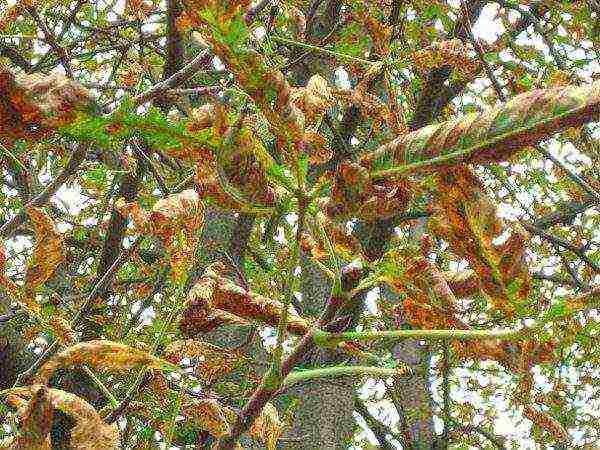
To avoid necrosis on chestnuts you need to adhere to one simple rule, namely, whitewash the tree in early spring and late autumn. Such a remedy will protect the bark from both frost and heat.
Rot
Another problem of chestnut trees is rot, which affects various parts of the plant.
| Root rot | The disease is dangerous because if you do not take measures to treat the tree in time, it can dry out and die. The cause of decay of the root system can be soil pollution, a large amount of precipitation and the proximity of groundwater.In addition to roots, such rot can rise to the trunk of a tree (to a height of no more than 2 meters). | If rot has formed on the trunk or roots of a tree, then it is no longer possible to get rid of it. Damaged chestnuts are cut down, stumps are uprooted and all wood is completely burned.
As a preventive measure, it is necessary to lime the soil and treat it with fugicides (Bayleton, copper sulfate, etc.). |
|---|---|---|
| White stem rot | A white bloom with black stripes appears on the tree trunk, the height of the spread of the disease is 3 meters from the beginning of the root system. Aging trees most often suffer from white rot. | |
| Yellow stem rot | The lower part of the trunk acquires a yellow, sometimes swampy hue, the presence of plaque is characteristic. | |
| Brown stem rot | Usually found on tree stumps. The bark becomes dense, colored brown, and cracks are observed. |
- Brown stem rot
- White chestnut stem rot
Rot strongly weakens the tree, it becomes sluggish and stunted and can no longer fully cope with severe climatic conditions such as wind, frost, heat, etc.
Pests, what to do and how to fight?
Chestnut is often attacked by various pests, scientists have more than 30 species of such insects, some of which are extremely rare.
Pests are usually divided into the following groups:
- Root - the brightest representative is the May beetle, whose larvae reproduce in the root system, and adult insects feed on foliage;
- Sucking - pests of this group feed on the sap of leaves, flowers and young shoots. Such insects include thrips, scale insects, aphids and mealy worms;
- Leaf miners - one of the most common and dangerous pests that multiply very quickly and move to healthy trees. The larvae of the chestnut moth feed on the foliage of the plant;
- Foliage gnawing pests - the elm leaf beetle and the elm beetle feed on the pulp of the leaf, leaving holes in it;
- Stem - such pests can be found extremely rarely, their larvae feed on the core of the tree trunk, and adults gnaw through the bark. Such insects include bark beetles, longhorn beetles, etc.
- Scabbard feeds on chestnut leaf juice
- May beetle larvae breed in the chestnut roots, and the beetle eats the leaves
- Ilm leaf beetle
- Chestnut leaves damaged by minera
Miner moth
The miner moth is the most dangerous pest of the chestnut. The main problem is that these insects have not been fully studied, and experts have not developed a formula for a drug that gives 100 percent results. The adult chestnut aphid is a butterfly, the size of 4 mm with folded wings... The insect larvae carry the threat, they settle in the foliage, gradually eating it. Such actions lead to early leaf fall.
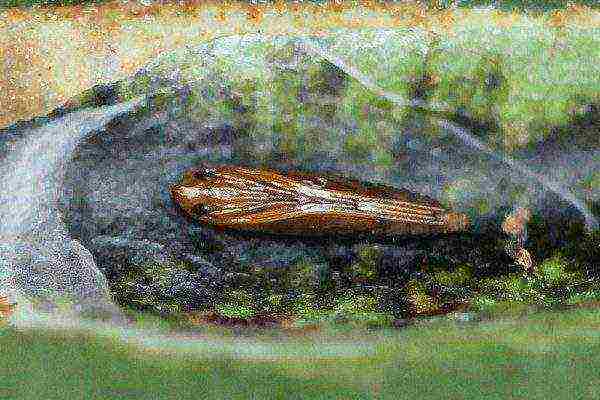
Treatment should begin with the removal and disposal of damaged leaves and branches of the tree, it is also worth remembering that larvae can withstand temperatures up to -25 degrees, therefore, you need to process chestnuts for at least 2 seasons.
To get rid of insects, use the following drugs:
- Special injectionseg Carbosudfan or Imidachloroprid. Injections should be made with a special gun over the entire diameter of the tree trunk so that the drug is evenly distributed. Such drugs are quite expensive, but they are highly effective;
- You can also spray the chestnut hormonal drug Insegar.
Disease prevention than wood processing
If the chestnut leaves begin to turn yellow and dry, this is the first sign of tree disease. To prevent the occurrence of diseases and pests, you need to do the following:
- Regularly examine the chestnut in order to detect all changes in time;
- Carefully care for young trees, and feed regularlyand;
- Carry out sanitary pruning of the crown and burn all damaged leaves and branches;
- The resulting wounds need to be treated and lubricate with garden pitch;
- In the presence of chronic diseases, during the vegetative period chestnut is treated with fugnicides (drugs are selected in accordance with the diseases);
- Same preparations should be used to treat the mulch, which is left under the tree so that the insect larvae cannot overwinter there.
To maintain a healthy and strong chestnut, it is necessary to carry out preventive treatments in a timely manner and treat diseases and eliminate pests.
